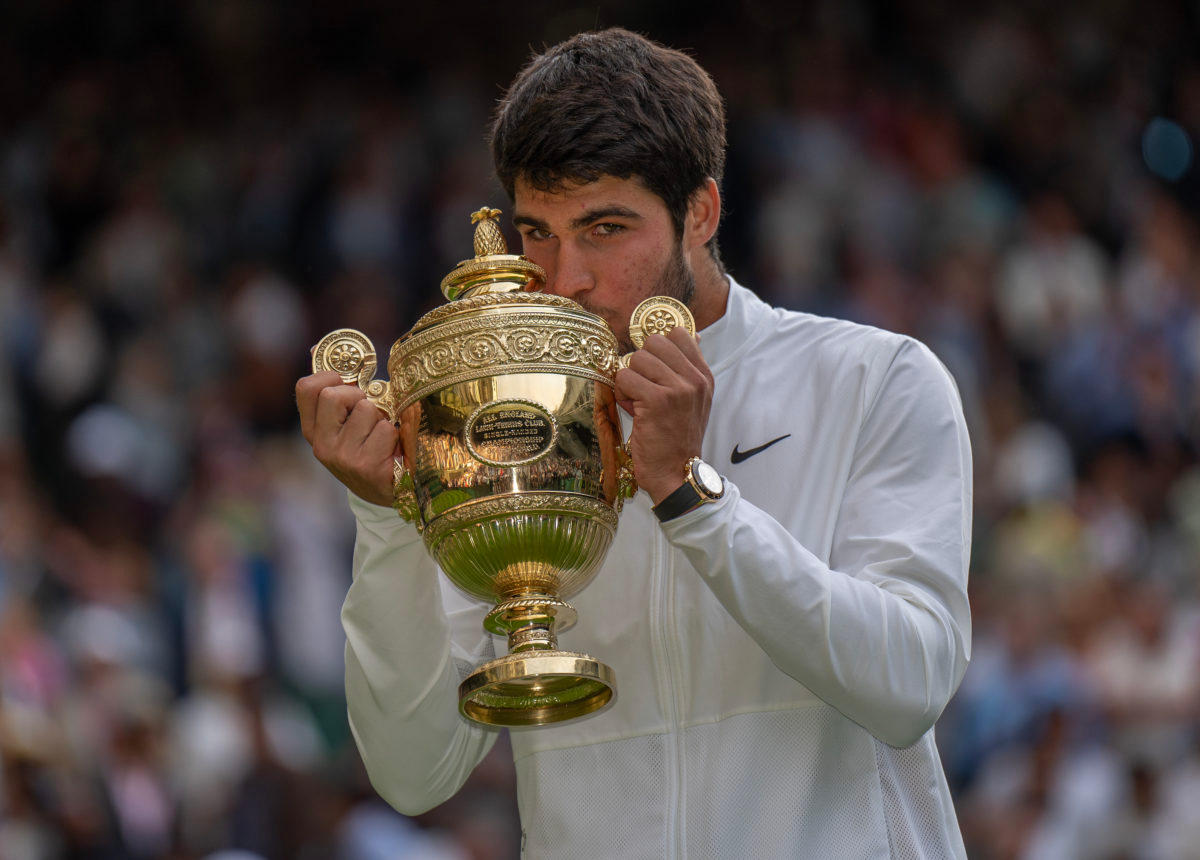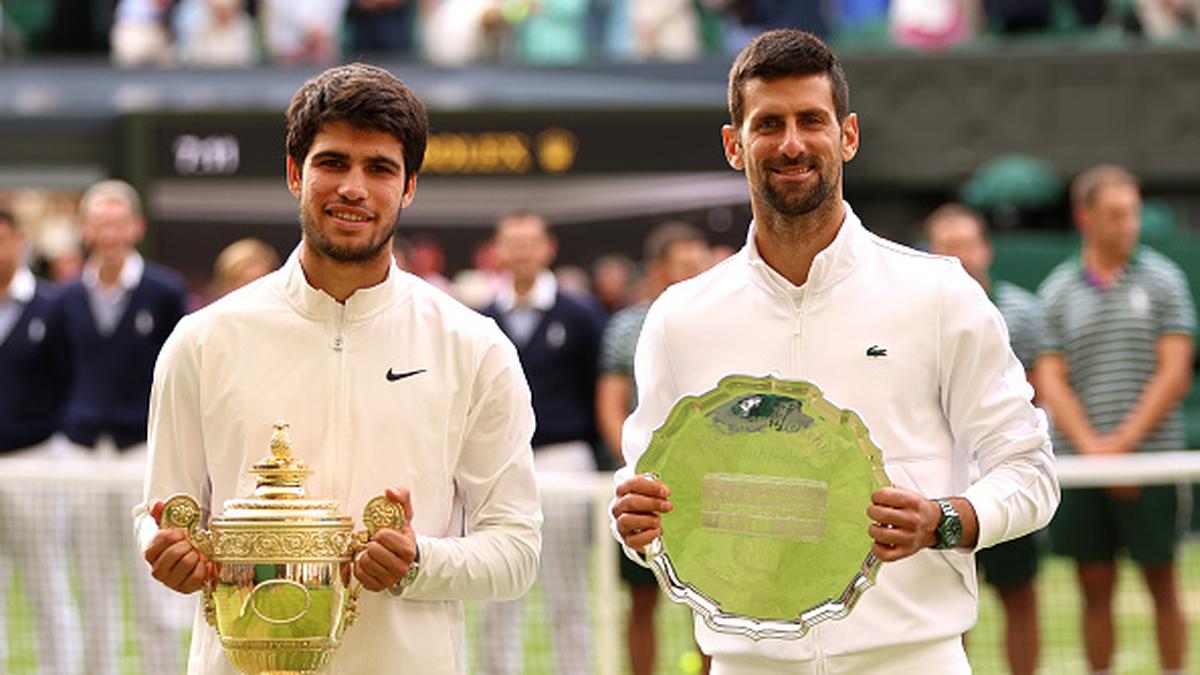History and Evolution of Men’s Wimbledon Final

The men’s Wimbledon final, the oldest and most prestigious tennis tournament in the world, has a rich history dating back to 1877. Over the years, the tournament has undergone significant changes in format, rules, and technology, reflecting the evolving nature of the game.
Format and Rules
The first Wimbledon final was played in 1877 as a challenge round, where the previous year’s champion automatically advanced to the final and faced the winner of a single-elimination tournament. This format remained in place until 1922, when the tournament was expanded to include a full draw of 128 players. The format has remained largely unchanged since then, with the exception of the introduction of tie-breaks in 1971 and the expansion of the draw to 163 players in 2019.
Impact of Technology
Technology has played a significant role in the evolution of the men’s Wimbledon final. The introduction of composite rackets in the 1970s and 1980s led to a shift towards a more power-based game, while the advent of Hawk-Eye in 2006 has reduced the number of disputed line calls. Other technological advancements, such as improved training methods and equipment, have also contributed to the overall improvement in the quality of play.
Notable Matches
The men’s Wimbledon final has produced some of the most memorable matches in tennis history. Some of the most notable matches include:
– 1980: Bjorn Borg vs. John McEnroe: A five-set classic that is considered one of the greatest tennis matches of all time.
– 1987: Pat Cash vs. Ivan Lendl: A thrilling four-set victory for Cash, who became the first Australian to win Wimbledon since 1976.
– 2008: Roger Federer vs. Rafael Nadal: A five-set epic that lasted over four hours and is widely regarded as one of the greatest Wimbledon finals ever played.
Key Players and Rivalries in Men’s Wimbledon Finals
The men’s Wimbledon final is one of the most prestigious events in tennis, and it has been graced by some of the greatest players in the history of the sport. In recent years, the “Big Three” of Roger Federer, Novak Djokovic, and Rafael Nadal have dominated the Wimbledon final, winning a combined 20 titles since 2003. These three players have all played a unique role in shaping the history of the tournament, and their rivalries have produced some of the most memorable matches in Wimbledon history.
Roger Federer
Roger Federer is widely considered to be the greatest tennis player of all time. He has won a record 20 Grand Slam titles, including eight Wimbledon titles. Federer is known for his elegant playing style, his powerful serve, and his all-court game. He is also one of the most popular players in the world, and his matches are always highly anticipated.
Novak Djokovic
Novak Djokovic is another one of the greatest tennis players of all time. He has won 21 Grand Slam titles, including seven Wimbledon titles. Djokovic is known for his relentless baseline game, his incredible fitness, and his mental toughness. He is also one of the most successful players in Wimbledon history, and he is always a contender for the title.
Rafael Nadal
Rafael Nadal is the third member of the “Big Three.” He has won 22 Grand Slam titles, including two Wimbledon titles. Nadal is known for his powerful forehand, his incredible court coverage, and his fighting spirit. He is also one of the most successful players in Wimbledon history, and he is always a threat to win the title.
Rivalries
The rivalries between Federer, Djokovic, and Nadal have produced some of the most memorable matches in Wimbledon history. Federer and Nadal have played each other in the Wimbledon final four times, with Federer winning twice and Nadal winning twice. Djokovic and Federer have played each other in the Wimbledon final twice, with Djokovic winning both times. Nadal and Djokovic have played each other in the Wimbledon final once, with Djokovic winning. These three players have pushed each other to new heights, and their rivalries have helped to make Wimbledon one of the most exciting tournaments in the world.
Cultural Significance and Impact of Men’s Wimbledon Final

The men’s Wimbledon final is not just a sporting event; it is a social occasion and a cultural phenomenon. The tournament has been held at the All England Club in Wimbledon, London, since 1877, and it is the oldest tennis tournament in the world. Wimbledon is one of the four Grand Slam tournaments, and it is considered to be the most prestigious tennis tournament in the world.
The men’s Wimbledon final is a major event in the British social calendar. It is attended by members of the royal family, celebrities, and tennis fans from all over the world. The tournament is also a major media event, and it is broadcast to over 200 countries.
The Wimbledon final has a number of traditions and rituals associated with it. The players wear all-white clothing, and they must bow to the royal box before the match begins. The winner of the tournament is presented with the Challenge Cup, a silver trophy that was first awarded in 1887.
The Wimbledon final has a significant impact on British society and the global tennis community. The tournament is a source of national pride for the British people, and it helps to promote tennis around the world. The Wimbledon final is also a major economic event, and it generates millions of pounds in revenue for the British economy.
Traditions and Rituals
The Wimbledon final is steeped in tradition and ritual. The players wear all-white clothing, and they must bow to the royal box before the match begins. The winner of the tournament is presented with the Challenge Cup, a silver trophy that was first awarded in 1887.
Other traditions and rituals associated with the Wimbledon final include:
– The players walk onto the court to the sound of “God Save the Queen.”
– The players shake hands at the net before the match begins.
– The players change ends after every six games.
– The players take a break for tea after the third set.
– The winner of the tournament is presented with the Challenge Cup on Centre Court.
These traditions and rituals help to create a unique and memorable experience for the players and the fans. They also help to make the Wimbledon final one of the most prestigious events in the world of tennis.
Impact on British Society, Men’s wimbledon final
The Wimbledon final has a significant impact on British society. The tournament is a source of national pride for the British people, and it helps to promote tennis around the world. The Wimbledon final is also a major economic event, and it generates millions of pounds in revenue for the British economy.
The Wimbledon final is a major media event, and it is broadcast to over 200 countries. This exposure helps to promote British culture and values around the world. The tournament also attracts a large number of tourists to the UK, which helps to boost the economy.
The Wimbledon final is a major sporting event, and it inspires many young people to take up tennis. The tournament also helps to promote healthy living and exercise.
Impact on the Global Tennis Community
The Wimbledon final has a significant impact on the global tennis community. The tournament is one of the four Grand Slam tournaments, and it is considered to be the most prestigious tennis tournament in the world. The Wimbledon final attracts the best tennis players in the world, and it is a major showcase for the sport.
The Wimbledon final also helps to promote tennis development around the world. The tournament provides funding for tennis programs in developing countries, and it helps to train young tennis players. The Wimbledon final also inspires many young people to take up tennis, and it helps to grow the sport around the world.
The Wimbledon Men’s Final concluded in an enthralling match that left spectators on the edge of their seats. While the tennis world witnessed history unfold on Centre Court, it’s worth noting the remarkable achievements of Mayar Sherif , who made history as the first Egyptian woman to reach the semi-finals of a Grand Slam tournament.
Her journey serves as an inspiration, reminding us that the pursuit of excellence transcends boundaries and ignites the flame of aspiration in all corners of the globe. As the Wimbledon Men’s Final draws to a close, we celebrate both the victors and the trailblazers who continue to shape the legacy of the sport.
As the men’s Wimbledon final draws to a close, the anticipation for the women’s Wimbledon final grows. While the men have battled it out on Centre Court, the women have been quietly preparing for their own showdown. With both finals promising to be thrilling spectacles, the Wimbledon Championships reach their climax.
